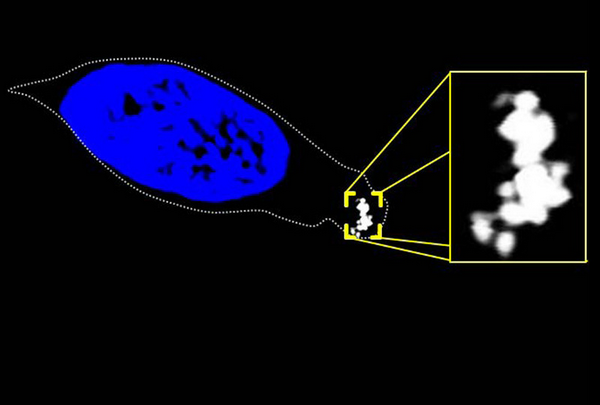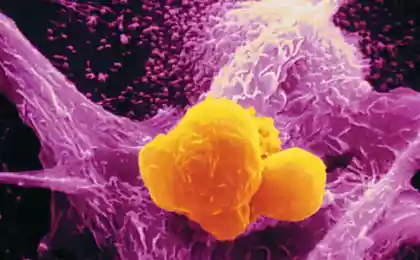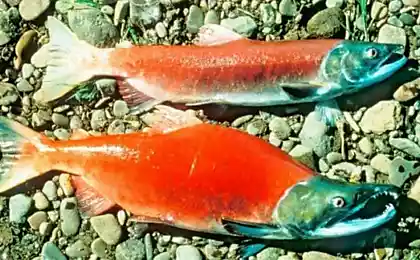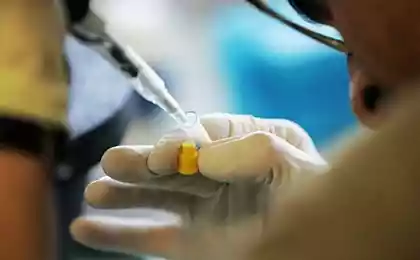872
The fish found magnetically sensitive cells

The cells of rainbow trout in an alternating magnetic field behave like a compass needle. According to scientists, this is the first consistent results pointing to the existence of such cells in animals.
For the first time the ability to orientation in a magnetic field has been detected in birds in the 1960s. Although since the magnetic feeling still have found a number of animals, its mechanism remains unclear. Firstly, the animals apparently did not have a body that would collect magnetic signal, amplifies it and translated into the language of neural impulses, as does the ear with sound vibrations. Secondly corresponding receptor cells would have to contain magnetically structure - for example, magnetite crystals. This mineral has been found in bacteria, which also can feel the magnetic field. But most of the attempts to find magnetite cells in animals ended in failure: prevent contamination or a simple iron or the same bacterial impurity magnetite.
Researchers from the University of Munich Ludwig - Maximilian (Germany) managed to reliably show that the magnetically sensitive cells do exist. Scientists have experimented with epithelial cells of rainbow trout, which, like other migratory animals can be guided along the magnetic field. Previously, something like that trout have been found, but the results were considered "require additional verification." At this time, apparently no question should arise. The researchers placed the epithelial cells in an alternating magnetic field. Those cells which have tried to spin together with the field and are magnetic. The frequency of such cells in the area of magnetic sensitivity is low in trout - one for 10,000, only about a hundred.
On the other hand, the researchers in the journal PNAS, the paucity of these cells is compensated by their high sensitivity. A sensitivity provided with large concentrations of magnetite crystals: 10-20 micron cell magnetite inclusions occupy one micron. Cell "magnetic needles" are attached to the membrane, and is believed to scientists, when you change the orientation of the magnetic field of magnetite particles "tense" and pass it directly to the cell membrane voltage, with which the corresponding momentum goes on neurons in the brain.
However, while it is impossible to say for sure whether these cells play a role of receptors. In other words, it is magnetically cells, but the cells are not yet a magnetic sense. In order to fully ensure their receptor function, scientists should see the transfer of specific neural signal from these cells in response to changes in the field.
The opposite situation occurs in birds: they found neurons to transfer the magnetic signal, but has not yet been found the receptor cells. It seems that the method by which scientists were looking for the receptors of the magnetic field in trout, work, and birds, and then the mysterious magnetic sensitivity finally get complete anatomical embodiment.
Romans was warmer than we thought
On the territory of Bulgaria have been found the remains of two vampires























